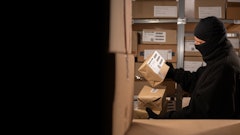
Food safety has become a high profile issue. In the U.S., it is estimated that each year 1 in 6 visitors to restaurants become sick from food-borne illnesses—that’s 48 million people. Even the world’s best restaurants and food producers are not immune to the problems of food-borne illness. In February, Danish restaurant Noma—named as the World’s Top Restaurant by Time magazine—hit the headlines for the wrong reasons when 63 patrons contracted the norovirus over a five-day period.
Hygiene problems, and specifically “lukewarm” hand washing, were identified as the source of the outbreak; but food-borne illnesses can be caused by many factors.
For example, these key factors include inadequate hygiene processes and poor control of food temperatures for raw and cooked products. For most restaurants, hotels, retailers and other foodservice providers, food safety monitoring involves manually checking the temperature, humidity and status of food storage areas as well as recording the completion of hygiene checks and recording the temperature of raw and cooked food.
These checks are typically performed at regular three- to four-hour intervals each and every day as part of an establishment’s HACCP system. HACCP (Hazard Analysis Critical Control Point), includes a series of checks and procedures to control the processes and sensitive points in the food chain. The HACCP system has been recognized as an international standard for safe food production and the World Health Organization (WHO) has adopted it as the most effective means for ensuring food safety.
While it is important to have these checks in place, this work is often carried out by employees who may be inadequately trained in food hygiene. A high turnover of staff and inexperienced managers, combined with the constant pressure to reduce costs can also lead to corners being cut. In a typical restaurant, it can take over an hour for sous chefs or line cooks to complete manual line and quality checks and to complete the necessary paper-based reports.
However, things are changing and technology is now coming to the rescue with a new generation of paperless HACCP solutions that harness the latest wireless monitoring technology. Smart wireless sensors can be placed in refrigerators and other food preparation and holding areas to provide continuous and automated 24/7 monitoring of temperature, humidity and door status. Associated wireless handheld sensors can also be used to collect food temperature and hygiene check data at the press of a button, dramatically speeding up the process and reducing the risk of human error. All this data is user authenticated, time-stamped and downloaded wirelessly to a centralized PC-based system and stored in a secure database, which automatically generates food safety compliance reports, along with a full audit trail in case of site inspections or future investigations. This saves time and gives peace of mind to establishment owners who may otherwise be worried about missing checks, making errors and losing data or having to decipher signatures on paper-based systems from members of staff who may have left.
In addition to automating the process of food safety monitoring, wireless technology can be used to send alerts to PCs, tablets or smartphones. This provides immediate notification if there is a problem with cold storage and food temperatures to ensure food safety and to prevent costly food spoilage in the event of equipment failure. To see the value of this service, you need only look at the recent case of the restaurateur whose chef left the door of a walk-in refrigerator open overnight. He returned the next morning to find that all his specialty foods, meats and proteins had gone bad, costing about $30,000 in food alone.
Wireless technology is inherently flexible and a modular system can be used for any type of food operation and scaled from a single local site to multi-site operations, using Web-based software to configure, monitor and manage the complete network from one location.
Facing increasing cost pressures, competition and compliance demands, restaurants and foodservice providers can no longer afford to take risks with their food safety monitoring. A food-borne illness or failure to meet HACCP requirements doesn’t just damage reputations—as in the case of Noma—it can lead to costly litigation and, in extreme cases, closure. Wireless technology will not eliminate the problems, but can make a major contribution to mitigating the risks.




























